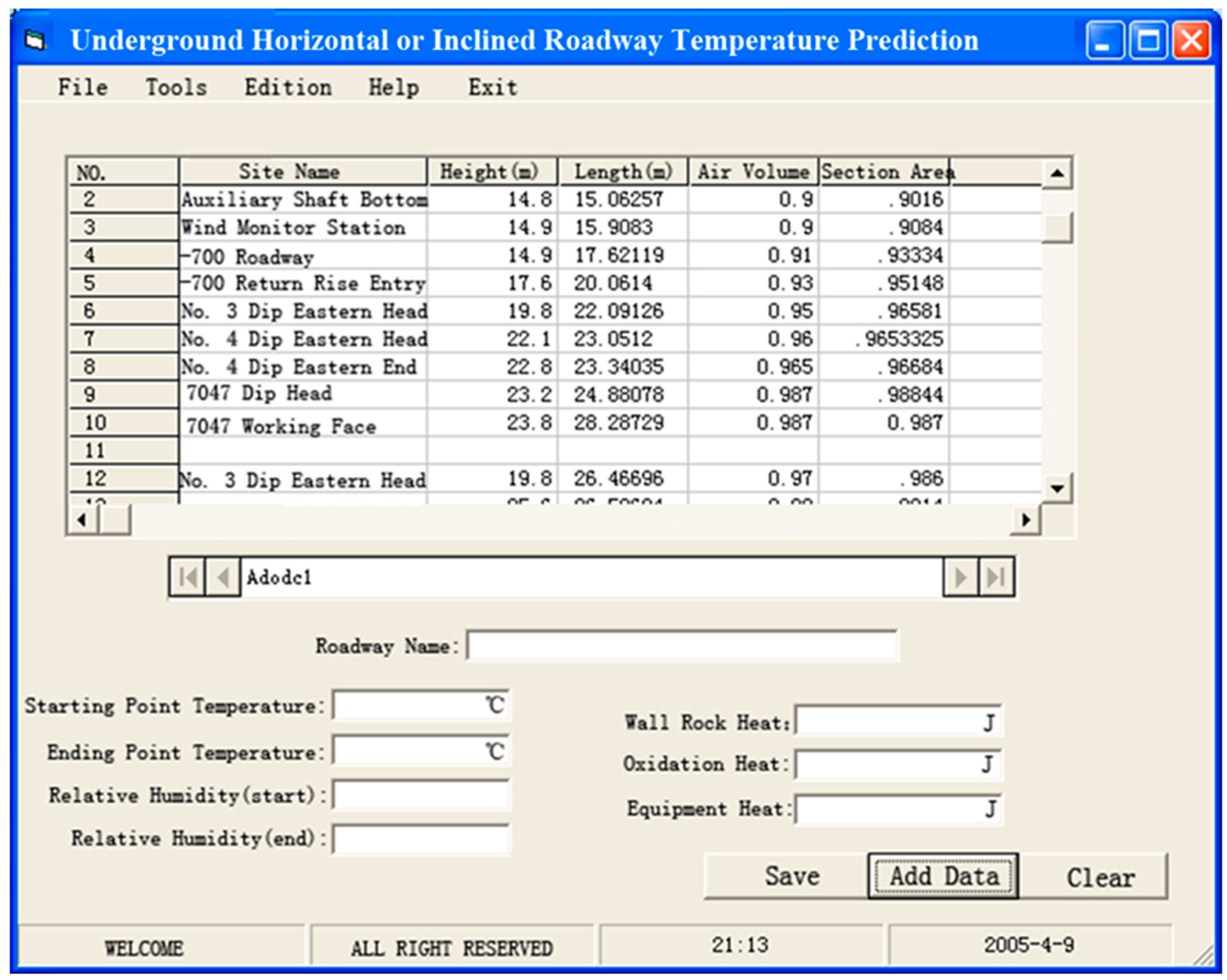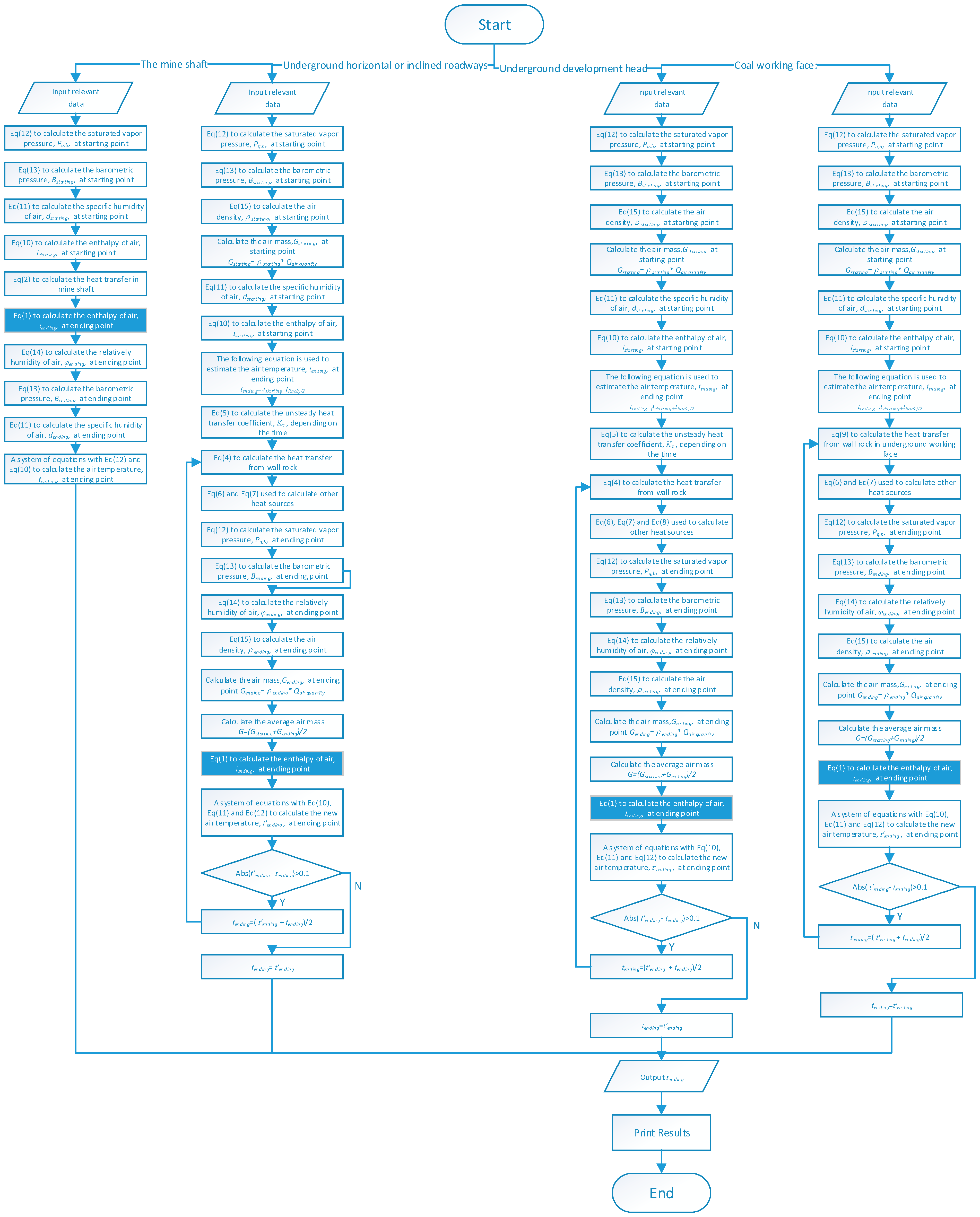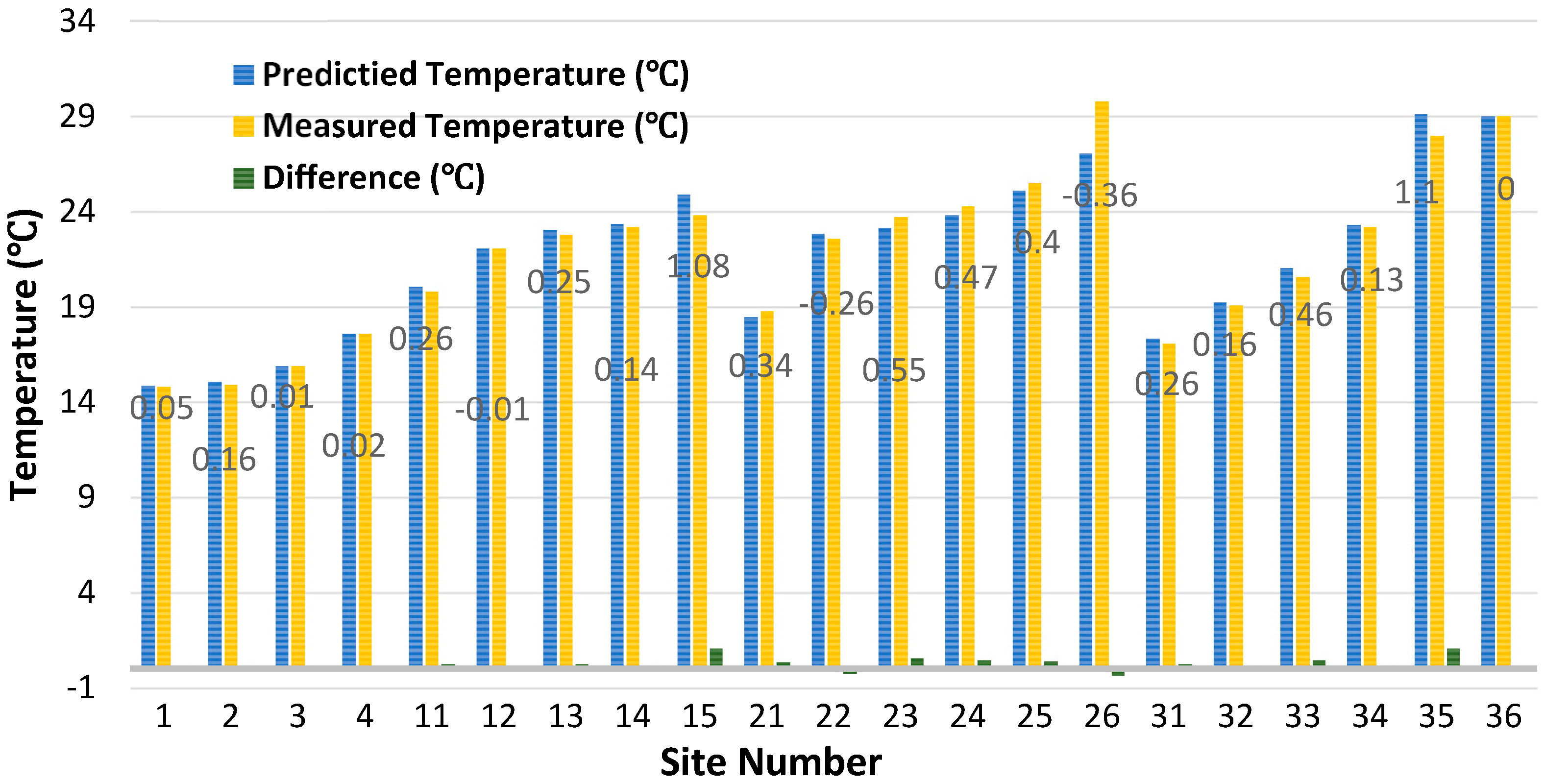1. Introduction & Background Information
Mining works over a long period have been going ever deeper for the extraction of mineral resources. One of the serious problems associated with depth is the heat produced as a result of increasing geothermal gradient, air compression, and ground water. According to the Chinese government official report released in 2007 [
1], among the state owned coal mines, 28.5% of coal mines in China have a depth over 600 m and from more than 70 mines temperatures in working faces exceed 26 °C and 30 of them are over 30 °C. In addition, the highest temperature in an underground working face can achieve 37 °C [
1]. Currently, the depth of a typical coal mine is increasing at a rate of more than 20 m annually in China [
2]. The hot environment in deep underground coal mines in China causes serious problems for mine operators. The same thing occurs in other countries as well. For example, the air temperature in western South Africa underground gold mines rises to 50 °C at a depth of 3300 m. The temperature in the Fengyu lead-zinc ore mine in Japan is up to 80 °C at a depth of 500 m [
3].
The thermal stress due to the high temperature in deep mines affects not only the health, but also the safety performance of miners. Employees working in deep mines are exposed to a high temperature and coupled with strenuous work causes dehydration. Such working conditions can lead to various levels of heat disorders, including heat cramps, heat exhaustion, heat collapse, and heat stroke. The most serious and dangerous one is heat stroke which can be fatal or cause multiple organ failures. Heat can also affect a worker’s attention, hand-to-eye coordination, mental acuity, and other neurological functions, which contribute to mine accidents [
4]. The work efficiency of persons working in a hot, humid working environment is reduced as work must be carried out at a slower pace to avoid the body overheating and additionally, dexterity and coordination, a person’s ability to observe irregular faint optical signs, to stay alert and to make quick decisions are adversely affected by the thermal strain. Studies of a 3-h drilling operation conducted under varying room temperatures show that the best results were achieved at 84 °F (29 °C), and the performance was reduced to 75% capacity at a room temperature of 91 °F (33 °C), to 50% at 96 °F (35 °C), and to 25% at 99 °F (37 °C). The study also shows that the upper limit for the best performance of a novice is 77 °F (25 °C) [
5].
A prediction of the underground air temperature is required to make heat control plans effectively and economically. In order to control heat in underground mines, it is important to calculate or estimate the amplitude of the heat flow from each source. The total heat gain will be matched by the air-cooling requirements. From administrative perspectives, the prediction of the underground air temperature will help to make a selection and acclimatization plan for workers working in hot and humid work areas. The South Africa mining industry has made significant progress in reducing the incidence of heat strokes through prior selection and acclimatization of miners. Acclimatization is a long-term adjustment of an individual to stress. An acclimatized person can perform many tasks in a hot and humid work site whereas a non-acclimatized person cannot work. For example, a person should be given enough time to adapt to a hot work site where the wet bulb globe temperature (WBGT) may exceed 79 °F (26 °C). A recommended six-day acclimatization schedule calls for miners to work in a hot work site for 50% of the time on the first work day, and an additional 10% of time on the days that follow the first day [
5].
The control of heat in mines can be realized through a combination of ventilation, refrigeration, and cooling. Bossard [
6] provided ways to calculate the magnitude of the heat flow gained from heat sources to the mine air in an underground mine. Torres and Singh studied thermal stress and human feelings in underground mining [
7]. Cong
et al., designed an air cooling system using a low-temperature water spay to control heat hazard in mines [
8]. He [
3] developed a High Temperature Exchange Machinery System (HEMS) for deep mine heat hazard control under the principle of extracting cold energy from mine water inrush. This cooling system was applied in several deep coal mines in China. It firstly extracts cold energy from mine water inrush to cool working faces; then uses the heat extracted by HEMS to supply heat to buildings and bath water instead of using a boiler. Wang,
et al. [
9] proposed research to evaluate the thermal status of the human body by considering parameters from both the human body and the surrounding environment. Wagner studied the major methods of cooling deep and ultra-deep mines [
10]. His research showed that the deciding factor behind the choice of surface or underground cooling of ventilation air is the auto-compression of ventilation air. The application of chilled service water together with ice slurry was found to be the most cost effective way of mine cooling by Wagner. The amount of water required for mine cooling was reduced by using ice slurry as the cooling medium. Therefore, the cost of pumping water to the underground working faces was reduced.
In summary, the proper prediction of the temperature in underground working environments is significant for mine operation and plays important roles such as:
Reasonable assessment of the heat stress for underground miners
Proper use of mitigation measures against thermal damages to improve working efficiency;
Providing accurate fundamental data for calculating the cooling load once a system is designed;
Efficient selection of the cooling medium and reduction of the refrigeration cost;
Therefore, to have better heat control in underground mines, accurate air temperature is the key for mine operators. Due to the complex environmental conditions in underground mines, the air temperature varies in deep mines due to several types of heat transfer processes. In this paper, a model for predicting the underground air-route temperature for ultra-deep mines based on previous findings is developed. In addition, a numerical tool is also developed to facilitate the calculations. The following sections start by introducing the basic mathematical models which make up the backbone of the computer program. Then, the flowchart is described and a user-interface is developed for implementing the algorithm. Finally, a comparison with the measured data shows that this model has a wide applicability and could be applied in operations.
6. Conclusions
Accurate evaluation and prediction of the air temperature increase in underground coal mines can provide very valuable information for mine operators in order to take preventive measures for mitigating thermal problems for miners as well as improving their health. In order to deal with such a problem, by consideration of various heat sources and their roles in increasing the temperature, a mathematical model was proposed for providing air-temperature prediction in mines and a numerical tool and interface was also developed. This program provides a versatile, reliable, and easy-to-use tool for users who care about or operate in underground ventilation management.
Based on the case study, the proposed underground air-route temperature prediction model appears to represent the characteristics of temperature increase underground. Various underground heat sources (air compression, wall oxidation, underground heat, machinery, etc.) are covered by the model. By applying the law of heat conservation, a mathematical solution for deriving temperature was proposed via thermodynamic equations. A testing case for an ultra-deep underground coal mine demonstrated the accuracy of the prediction model. However, the following points should be improved in future research; (a) more types of underground heat sources should be covered and the related calculation equations should be derived. Considering the structure of the developed model, incorporating new heat sources and expanding the model capability are not difficult; (b) an in-depth analysis of moisture exchange in underground roadway walls should also be performed. The latent heat energy may change the air temperature due to such an exchange.










